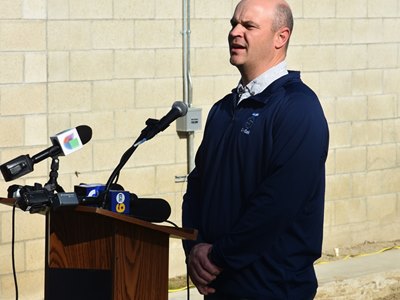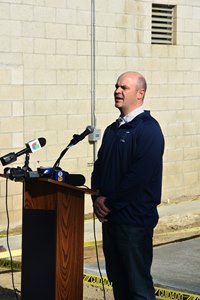Diagnostic Technology Improving Equine Safety at Tracks


Southern California-based racetrack veterinarian Dr. Ryan Carpenter said The Stronach Group's commitment to the latest diagnostic technology at its Santa Anita Park is improving the safety of horses at the track.
Participating in an online panel May 19, as part of a series of weekly online seminars on equine health and safety topics presented by Grayson-Jockey Club Research Foundation, Carpenter noted that access to bone scans, nuclear scintigraphy, a standing MRI, and PET scan have benefited horses.
"I can tell you today with 100% certainty that we have saved horses' lives with these pieces of equipment, without a doubt in my mind," Carpenter said. "This is basically all because the Southern California Equine Foundation and The Stronach Group have made a commitment to the safety of the horses."
The online series is being offered following the cancellation of the in-person Welfare and Safety of the Racehorse Summit, which had been scheduled for June 23. Tuesday's panel featured Carpenter, moderator Dr. Dionne Benson, the chief veterinary officer for track owner The Stronach Group; Dr. William Farmer, the equine medical director for track owner Churchill Downs Inc.; and Dr. Scott Palmer, the equine medical director for the New York State Gaming Commission.
Unveiled in December by Santa Anita and the Southern California Equine Foundation, the first-ever standing positron emission tomography scan machine was added at the track to aid in diagnosing equine lameness. The machine delivers improved resolution compared with nuclear scintigraphy imaging.
At an international meeting of vets this year in Newmarket, U.K., Carpenter said it became clear that each diagnostic tool has strengths and weaknesses. But as more data is compiled through their use, he expects added strides in equine safety.
"I think this is going to be the foundation that's going to really spring injury (research) related to the fetlock forward because it's going to produce a lot of good research and it's going to produce a lot of good collaboration," Carpenter said. "I'm excited to see what will come from this meeting in the coming years."
Along those lines in New York, Palmer noted that work is being conducted with the Cornell Ruffian Equine Specialists, located across the street from Belmont Park in Elmont, N.Y., using radiographic tomosynthesis to determine differences in healthy bone remodeling and problematic small injuries that have been associated with catastrophic injury.
"We've just never been able to figure out what the normal modeling process is and how that's different from a process that's gone off the rails before a horse is injured," Palmer said. "We're hopeful that this technology will help do that for us."
Beyond injuries to the lower legs, since 2014 Palmer has been using technology to monitor horses' hearts, looking for any irregular beats during pre-race exams. During the conference, he displayed the AliveCor EKG machine—about the size of a smart phone—he uses to look for any heart arrhythmia in pre-race exams.
"This device is inexpensive—it costs about $250. Interestingly, I've examined more than 200 horses so far and never found a horse with an arrhythmia where I had to say the horse can't race. That said, though, I believe that we should at least be looking at these horses for arrhythmia," Palmer said. "If we find these things pre-race, the horse should be scratched. And if we don't look for these things, we'll never find it."
Farmer said he's been talking with track vets and trainers at Churchill Downs to determine the best services and technology to offer in a new equine medical center there.
"It's a blank slate right now. It's a blank canvas, and we're excited to pursue opportunities. Churchill is very eager to do whatever we can to help make sure horses at our facilities are as safe as possible," Farmer said. "We're looking forward to kind of flesh that situation out and being able to do that."
